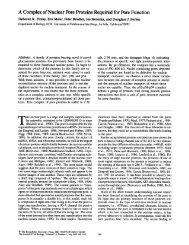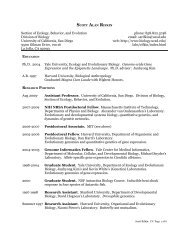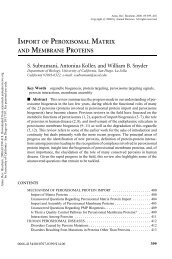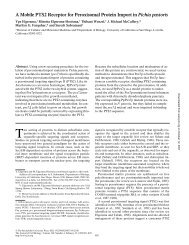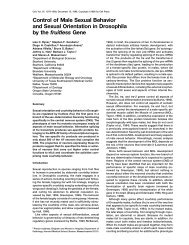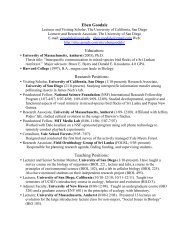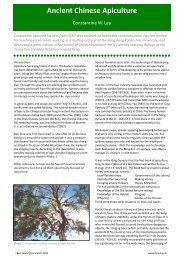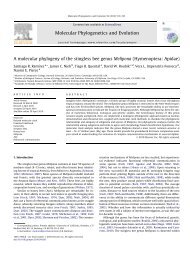Bee Basics - USDA Forest Service - US Department of Agriculture
Bee Basics - USDA Forest Service - US Department of Agriculture
Bee Basics - USDA Forest Service - US Department of Agriculture
You also want an ePaper? Increase the reach of your titles
YUMPU automatically turns print PDFs into web optimized ePapers that Google loves.
What is Buzz Pollination or as pollinationecologists call it, sonication?Buzz pollination is the process wherea bee attaches itself to a flower andrapidily vibrates its flight muscles.This rapid movement causesthe entire flower to vibrate andloosens the pollen so as to flow outthe openings in the anthers.Bumble bees use buzz pollinationwhen pollinating tomato flowers.Other flowering plants that requirebuzz pollination include cranberries andblueberries, eggplants, and other plantspecies in the family Solanaceae. Honeybees do not buzz pollinate flowers.Two female Morrison’s bumble bees (Bombus morrisoni)sonicate the pollen from pored-anthers <strong>of</strong> a garden tomato.Cuckoo <strong>Bee</strong>sOne large group within the Apidae family, the Nomadinae, is made upexclusively <strong>of</strong> parasitic bees, the cuckoo bees. Nomada bees are usually red oryellow, sometimes with whitish markings. They have lost all the adaptationsthat serve to carry pollen as they don’t need toprovision their young. They are nearly hairlessand are wasp-like in general appearance. Manycuckoo bees parasitize the nests <strong>of</strong> bees in the familyAndrenidae. They are <strong>of</strong>ten seen in early spring flyinglow over bare ground, searching for the nests<strong>of</strong> potential hosts. Once a cuckoo beelocates a nest, she waits nearby readyto sneak in and lay an egg while theA female digger bee (Melissodes sp.) leavesher nest unguarded. A cuckoo bee (Triepeolussp.) waits nearby for the chance to enter andlay her own eggs.21



